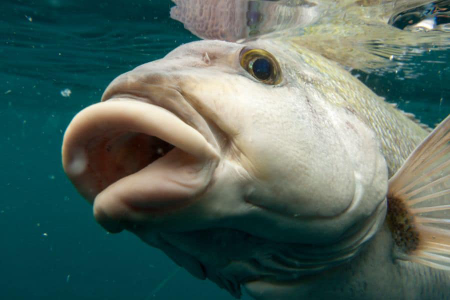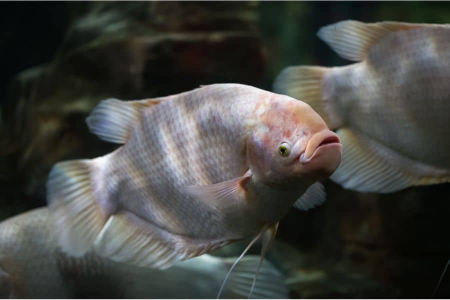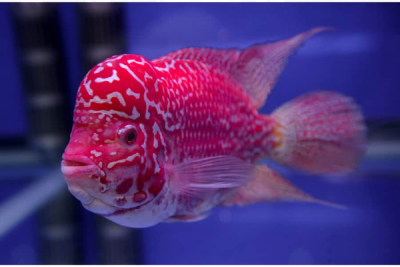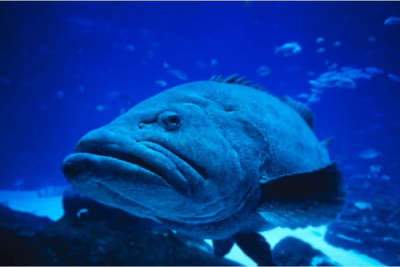Have you ever looked at a fish and wondered, what fish with big lips? If so, you’re not alone. Across freshwater and ocean habitats, numerous fish species have developed prominent, fleshy lips that are more than just a quirky feature—they serve important roles in survival and behavior. This article explores six notable fish species with big lips, explaining their unique adaptations, habitats, and why those lips matter.
Whether you’re an aquarium enthusiast or a curious nature lover, this big lips fish identification guide will deepen your appreciation for these extraordinary creatures.

Content
Why Do Fish Have Big Lips?
One of the most frequently asked questions is why do fish have big lips? The answer varies depending on the species, but in general, big lips serve multiple purposes:
- Feeding: Many fish use thick lips to help scrape algae off rocks, suck prey from crevices, or protect their mouths while crushing hard-shelled food.
- Protection: Large, fleshy lips can act as cushions, preventing injury when biting or digging in rough environments.
- Communication and Mating: In some species, bright or large lips serve as visual signals to attract mates or establish territory.
- Sensory Functions: Lips may have sensory cells that help fish detect food or changes in their surroundings.
With this understanding, let’s explore six amazing big-lipped fish that showcase these adaptations.
1. Kissing Gourami

The Kissing Gourami is one of the most recognizable fish with big lips. Native to Southeast Asia’s freshwater rivers and lakes, this species is best known for its “kissing” behavior, where two fish press their lips together in a ritualistic manner.
Their lips are thick and soft, perfectly designed to scrape algae and biofilm off submerged surfaces. These flexible lips act like suction cups, allowing the fish to forage effectively. Besides their feeding utility, the “kiss” is actually a form of social interaction, often mistaken for affection but more related to dominance displays.
This unique behavior and notable lips make the Kissing Gourami a favorite among aquarium hobbyists, highlighting how fish with large lip features can be both functional and fascinating.
2. Wrasse
Wrasses are a diverse family of marine fish well-known for their bright colors and distinctive lips. Among them, the Redlip Wrasse (Cirrhilabrus rubrisquamis) stands out due to its vibrant, pronounced red lips. These lips are not just for show—they allow the wrasse to pick small invertebrates and parasites from coral reefs.
Many wrasses are “cleaner fish,” using their lips to gently remove parasites from other fish species, helping maintain reef health. Their big lipped fish in ocean habitats are vital players in marine ecosystems.
The thick lips also protect their mouths when foraging among sharp coral and rocks, demonstrating how morphology supports ecological roles.
3. Blood Parrot Cichlid

The Blood Parrot Cichlid is a man-made hybrid popular in the aquarium trade. Its rounded body and exaggerated, fleshy lips make it a classic example of fish species with big lips. These lips assist the fish in scooping food from tank bottoms or decorations.
Though their lips are a result of selective breeding rather than natural adaptation, Blood Parrots use them practically for feeding. Their unique appearance often sparks debates among hobbyists about aesthetics versus function, but their popularity continues due to their distinct charm.
This fish represents how big-lipped fish can be both natural wonders and human-created curiosities.
4. Sheepshead Fish
The Sheepshead Fish is a marine species common in coastal waters along the Atlantic and Gulf of Mexico. It features thick, fleshy lips that protect its powerful jaws designed for crushing hard-shelled prey like crabs, oysters, and barnacles.
These big lipped fish in ocean environments rely heavily on their lips to buffer the impact of biting through tough shells, preventing damage to sensitive tissues. Their lips also help grip slippery prey, making them formidable hunters in their habitats.
Sheepshead Fish exemplify how big lips can be an important evolutionary adaptation for diet and feeding habits.
5. Giant Gourami

The Giant Gourami, native to Southeast Asia’s freshwater bodies, is another striking example of fish with big lips. Their thick, soft lips enable them to eat a wide variety of foods, including plants and small aquatic animals.
Their lips act like a suction mechanism, helping them nibble on vegetation or grasp food efficiently. This omnivorous diet requires adaptable mouthparts, and the Giant Gourami’s lips meet that need perfectly.
This species shows how fish with large lip features thrive by combining versatility with specialized feeding adaptations.
6. Red Lipped Batfish
The Red Lipped Batfish is one of the most peculiar big lips fish in ocean environments. Found around the Galapagos Islands, this fish has bright red, oversized lips that seem out of proportion with its body.
Unlike many fish, it doesn’t swim much but uses its modified fins to “walk” on the ocean floor. Scientists believe its vivid red lips may serve to attract mates or signal fitness.
The Red Lipped Batfish stands out as an extreme example of how evolution can produce dramatic lip features for reproductive or social purposes.
How to Identify Fish With Big Lips
If you’re interested in identifying big lips fish identification guide species, start by looking for these common characteristics:
- Thick, fleshy, or puckered lips that stand out from the body.
- Lips that may be brightly colored or textured differently.
- Fish that use their lips actively for feeding, defense, or display.
- Habitat clues: reef fish, freshwater species, and coastal dwellers often show these traits.
When observing these traits, it’s easier to categorize and appreciate the diverse functions of large lips across different fish species.
Conclusion About Fish with Big Lips
The fascinating world of fish with big lips reveals how evolution shapes not only appearance but survival strategies. These big-lipped fish use their prominent lips for feeding, protection, communication, and mating. From the playful Kissing Gourami to the mysterious Red Lipped Batfish, each species highlights different ways nature adapts to challenges.
Understanding these adaptations helps us appreciate the complexity beneath the water’s surface and the incredible diversity in aquatic life. Learn the basics and techniques of bait fishing to improve your chances of landing a big catch.
Frequently Asked Questions
Q1: What is the primary reason fish develop big lips?
Most big-lipped fish develop prominent lips to aid in feeding, such as scraping algae, grasping prey, or protecting their mouths while biting. Lips may also play roles in communication and mating.
Q2: Are big lips unique to certain environments?
No. Fish with big lips can be found in both freshwater and marine habitats. For example, the Kissing Gourami thrives in freshwater, while the Red Lipped Batfish inhabits ocean floors.

Emily Harris is your ticket to the sports world. From thrilling competitions to heartwarming sportsmanship, she’s got you covered with her extensive sports insight.

